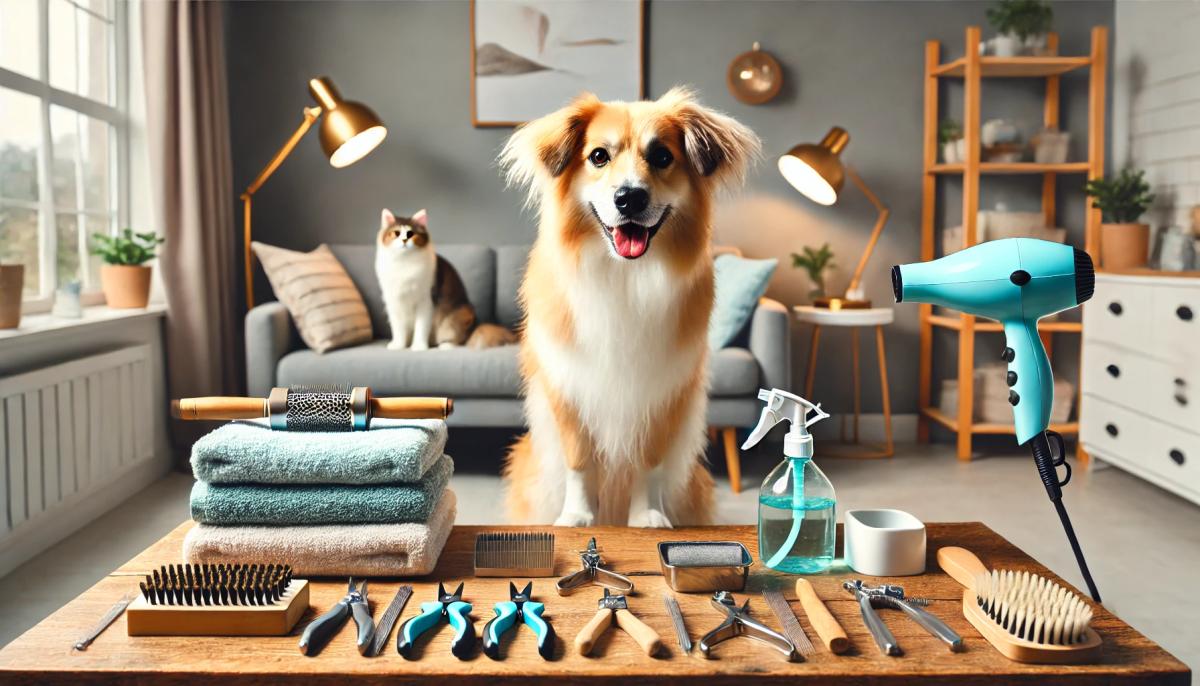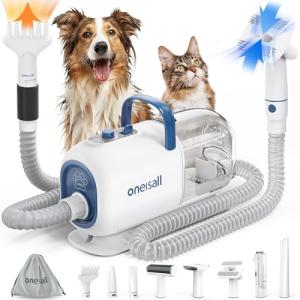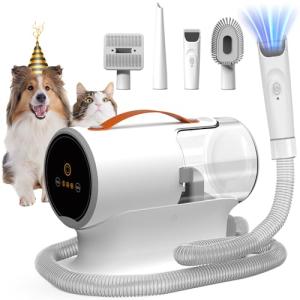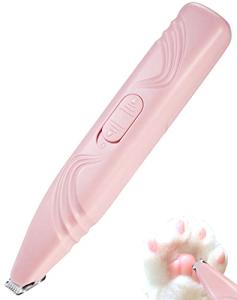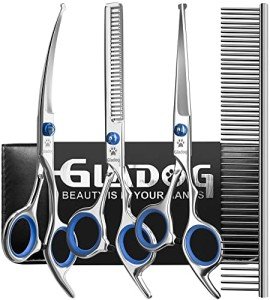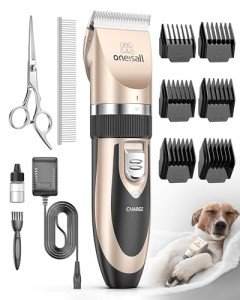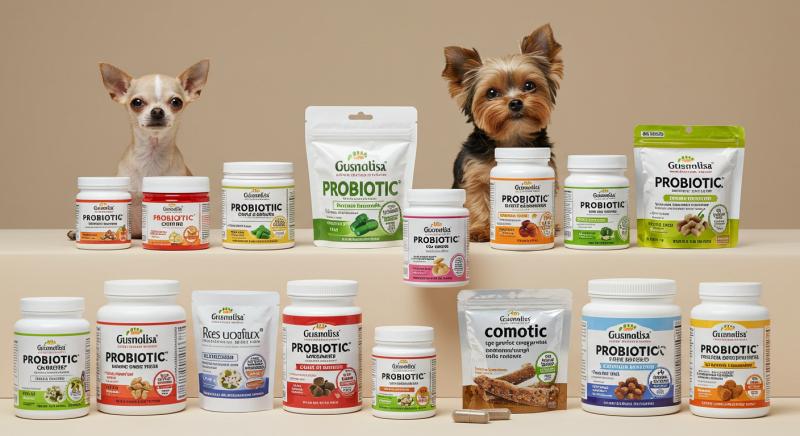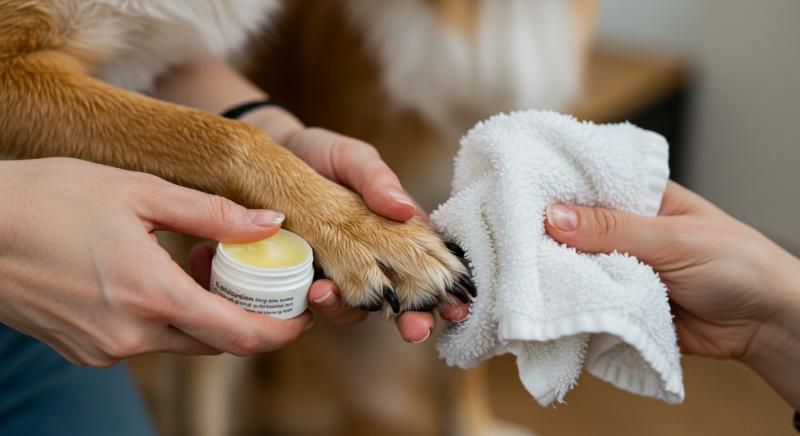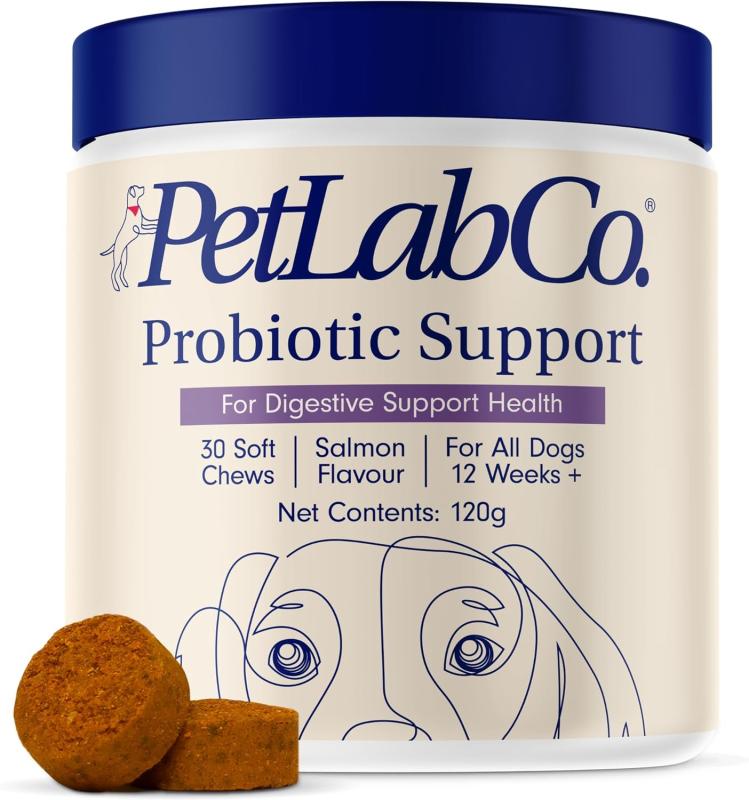Ultimate Guide to Pet Grooming at Home
Grooming your pet at home is a great way to keep them clean, comfortable, and healthy while strengthening the bond between you. With a few essential tools and techniques, you can make the grooming experience enjoyable for both you and your pet. Here’s an in-depth guide to grooming at home, covering everything from brushing to nail trimming.
1. Why Grooming is Important
Regular grooming is essential for your pet’s well-being. Grooming not only helps prevent matting, tangles, and shedding, but it also allows you to check for any unusual lumps, bumps, or parasites. Proper grooming routines also promote healthy skin, reduce the risk of infections, and help pets maintain an even body temperature.
2. Essential Grooming Tools
Here are some essential grooming tools based on your pet’s coat type and grooming needs:
- Brushes and Combs: Slicker brushes, pin brushes, and undercoat rakes work well for most dogs and cats. Short-haired pets may only need a rubber curry brush.
- Pet Shampoo and Conditioner: Use only pet-specific products to avoid irritating your pet’s skin.
- Nail Clippers or Grinders: These are essential for preventing overgrown nails, which can cause discomfort and mobility issues.
- Ear Cleaner: Pets with floppy ears are prone to infections, so an ear-cleaning solution and cotton balls are handy for regular cleaning.
- Dental Care: Pet-safe toothpaste and brushes keep their teeth healthy and prevent periodontal disease.
oneisall Dog Vacuum & Dryer for Shedding Grooming, 8 in 1 Pet Grooming Kit with Metal Blades, Adjustable Speed and Temperature Control, Low Noise for Long Hair Dogs and Cats, Hair Clippers, Dog Blower
Product information
$117.99
Product Review Score
4.74 out of 5 stars
105 reviewsProduct links
3. Bathing Your Pet
Bathing keeps your pet’s skin and coat in good condition, but it’s best to limit baths to once every 4-6 weeks for most pets, unless recommended otherwise by a vet.
- Pre-Bath Prep: Brush your pet before the bath to remove loose fur and detangle any mats. Place cotton balls in their ears to keep water out.
- Use Lukewarm Water: Use warm but not hot water to avoid scalding or chilling your pet.
- Gentle Shampoo Application: Apply a small amount of pet shampoo, lathering it gently over their body. Avoid the eyes, ears, and mouth.
- Thorough Rinsing: Rinse your pet thoroughly to avoid residue, which can irritate their skin.
- Towel Drying and Brushing: Use a towel or a pet-safe blow dryer on a low, cool setting to dry your pet completely.
4. Brushing for Different Coat Types
Regular brushing removes loose hair, prevents matting, and distributes natural oils.
- Short Coats: For dogs and cats with short coats, brush them once a week with a rubber brush or bristle brush.
- Long Coats: Long-haired pets benefit from daily brushing with a slicker brush or comb to avoid mats and tangles.
- Double Coats: Dogs with double coats (like Huskies or Golden Retrievers) may shed more and benefit from an undercoat rake to remove excess fur, especially during shedding season.
5. Nail Trimming Tips
Trimming your pet’s nails can be tricky, but it’s important for their health and comfort.
- Choose the Right Tool: Select clippers or a grinder based on the size and thickness of your pet’s nails.
- Trim Gradually: Trim a small amount at a time, aiming to avoid the quick, which is the sensitive area inside the nail. Light-colored nails make the quick visible, while dark nails require extra caution.
- Reward with Treats: Use treats to keep your pet calm and positive during nail trimming.
6. Ear Cleaning Basics
Some pets are more prone to ear infections, especially those with long or floppy ears. Regular ear cleaning helps keep infections at bay.
- Inspect Regularly: Check your pet’s ears weekly for signs of redness, odor, or excessive wax, which could indicate an infection.
- Use an Ear Cleaner: Apply a few drops of a vet-approved ear cleaner and gently wipe the outer ear with a cotton ball.
- Avoid Deep Cleaning: Never use cotton swabs inside the ear canal; this can lead to injury.
7. Dental Care for Fresh Breath and Healthy Teeth
Dental health is often overlooked but is vital for your pet’s overall health.
- Brush Their Teeth Regularly: Use pet-safe toothpaste (never human toothpaste) to gently brush their teeth a few times a week.
- Dental Chews and Toys: Special dental chews and toys can also help reduce plaque and tartar buildup.
8. Common Grooming Challenges and How to Handle Them
- Anxious Pets: If your pet is nervous, start with short grooming sessions and offer plenty of treats and praise. Using calming aids like CBD oil or a pet-safe pheromone spray can help.
- Mats and Tangles: Never try to pull or cut out mats without the proper tools. Use a detangler spray or mat splitter to carefully work through knots.
- Shedding: Regular brushing and bathing can help reduce shedding. Pets with high-shedding coats may benefit from de-shedding tools.
9. Creating a Positive Grooming Experience
To make grooming less stressful, create a positive environment. Choose a quiet space, use gentle handling, and reward them with treats. Many pets eventually enjoy grooming when it’s associated with comfort and treats.
Final Thoughts
With the right tools and some patience, grooming can be a rewarding experience for both you and your pet. A consistent routine will keep your pet looking and feeling their best while making grooming an enjoyable bonding activity. Whether you’re bathing, brushing, or nail trimming, your pet will appreciate the care and attention you put into their grooming routine.
